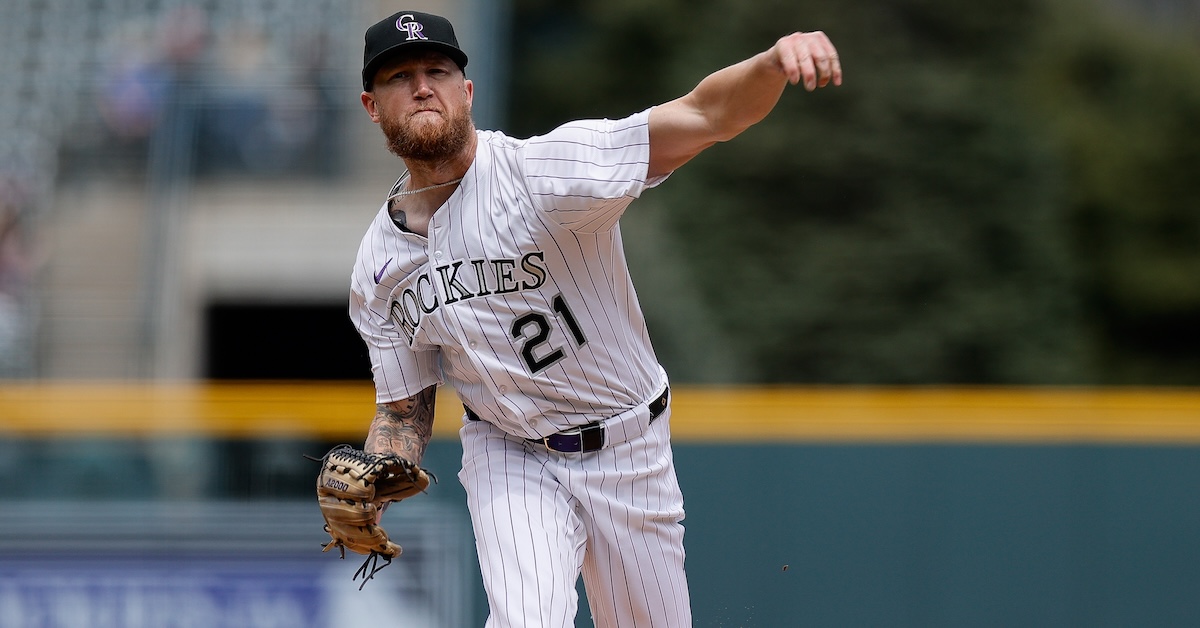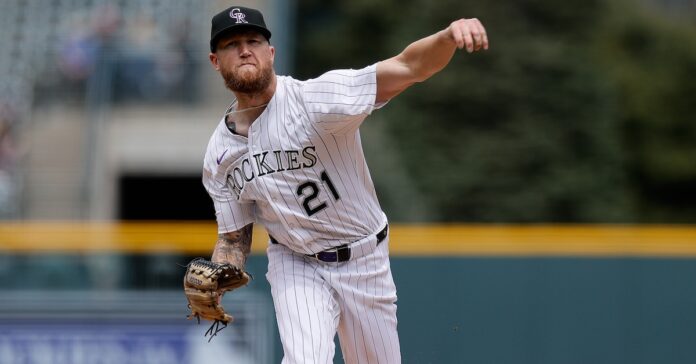
Kyle Freeland is scheduled to make his 206th begin for the Colorado Rockies on Friday night time, and when he does, he’ll tie Aaron Prepare dinner for probably the most in franchise historical past. The 31-year-old southpaw started constructing that quantity when he made his main league debut in April 2017. Three years earlier, he’d been drafted eighth total by the NL West membership out of the College of Evansville.
When our Rockies High Prospects listing was printed in November 2016, Freeland was ranked no. 6 in a system that Eric Longenhagen then described as “each attention-grabbing and complicated,” in addition to wonderful and underrated. Our lead prospect analyst assigned the lanky left-hander a 50 FV.
What did Freeland’s scouting report appear to be at the moment? Furthermore, what does he consider all of it these years later? Wanting to seek out out, I shared a few of what Eric wrote and requested Freeland to reply to it.
———
“Freeland missed an enormous chunk of the 2015 season coping with bone chips in his elbow and shoulder fatigue, and he regarded unhealthy within the Fall League when he returned.”
“That’s utterly inaccurate,” Freeland replied. “I led the Fall League in ERA. I used to be a Fall League All-Star. My first begin was not good, however each begin after that I used to be nails.
“[The bone chips and shoulder fatigue] was correct, although,” he went on to acknowledge. “I got here into camp — my first spring coaching, in 2015 — with shoulder impingement. We bought that cleaned up. I stayed again for prolonged spring trining and continued to construct up so I might break with our Excessive-A workforce. Then my elbow began bugging me. It locked up. I bought an MRI, there have been unfastened our bodies, so surgical procedure.”
“Freeland’s command is his most interesting attribute, garnering some future plus-plus grades from scouts. It permits him to get probably the most out of what’s a deep however comparatively pedestrian repertoire.”
“I might agree with that,” stated Freeland, whose huge league ledger consists of 60 wins, a 4.49 ERA, and a 4.58 FIP. “I’ve all the time prided myself on commanding the zone, and on commanding my pitches in all counts. I’m nicely conscious that I don’t have any blistering pitch in my arsenal that’s actually going to blow guys away. My fastball is low 90s. I do have some sharp breakers, however nothing that’s actually turning heads.”
“His upper-80s slider is brief and cutterish, however Freeland locates it very nicely to his glove aspect each to left- and right-handed hitters and it tasks as plus at maturity.”
“Very correct,” the southpaw stated. “That’s a pitch I’ve had for a really very long time. I discovered it after I was younger — manipulate it, [get] nice depth with it, and in addition create increasingly more reducing motion. I belief throwing it in any rely. It actually hasn’t modified in any significant approach over time.”
“Projection on Freeland’s changeup is restricted due to the size in his arm motion, however he maintains his fastball’s arm velocity when he throws it and it might develop to common.”
“Considerably correct,” Freeland stated. “My changeup is one thing I’ve labored on my total profession, and I’ll proceed to work on it for the remainder of my profession. It’s the pitch that I’ve struggled with probably the most, attempting to harness it, attempting to determine throw one with good arm velocity. There are occasions my arm will decelerate, attempting to govern that pitch off my fastball. That’s one thing we proceed to work on: making it appear to be a fastball popping out, and create depth and motion with it.
“As for the size in my arm motion… to be trustworthy, I don’t know what which means. I don’t shorten my arm in any approach with my changeup, nor do I lengthen it. I actually simply suppose like I’m throwing a fastball, solely with a distinct grip.”
“His low-80s curveball is a fringe-average change of tempo on his slider that works situationally.”
“Again then, correct,” Freeland stated. “I actually had no curveball. It was largely only a show-me pitch to let a hitter know, ‘Hey, I’ve this in my arsenal.’ I most likely wasn’t going to be utilizing it in any benefit counts. However it’s since morphed into one among my extra elite pitches. I can throw it in any rely, and I actually like to make use of it.”
“Stories peg Freeland as a no. 3 or 4 starter, with most inserting him on the low finish of the vary.”
“I imply, me being me, I’m going to say that’s inaccurate,” Freeland responded. “Folks can say what they need, however I’ve all the time had it in my head — and I’ll proceed to have it in my head — that I’m a no. 1 starter in a rotation. That’s what I’ve labored for. It’s what I’ve strived for.
“I do suppose there was a great quantity of stuff [in the scouting report] that was correct on the time. My pitch arsenal. How I went about my enterprise. My fastball was more durable — it had extra velocity to it — again then. Getting older, issues decelerate. You don’t transfer as quick. However total, I’d say that was fairly correct. I used to be within the developmental stage, attempting to be taught, attempting to be wholesome, attempting to be an enormous league pitcher. It was all about absorbing as a lot as I might.”
——
Earlier “Previous Scouting Stories Revisited” interviews could be discovered by means of these hyperlinks: Cody Bellinger, Matthew Boyd, Dylan Stop, Matt Chapman, Erick Fedde, Randal Grichuk, Ian Happ, Jeff Hoffman, Matthew Liberatore, Max Scherzer.
